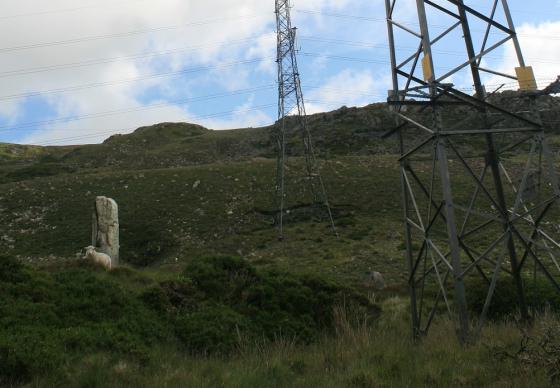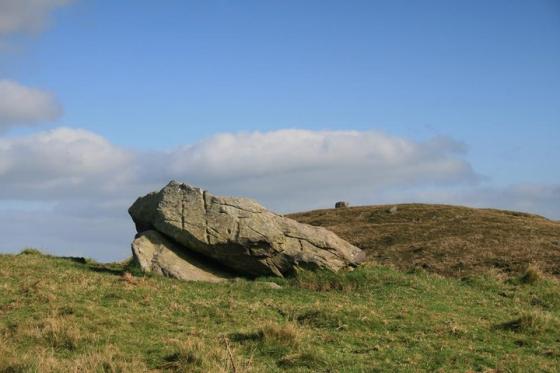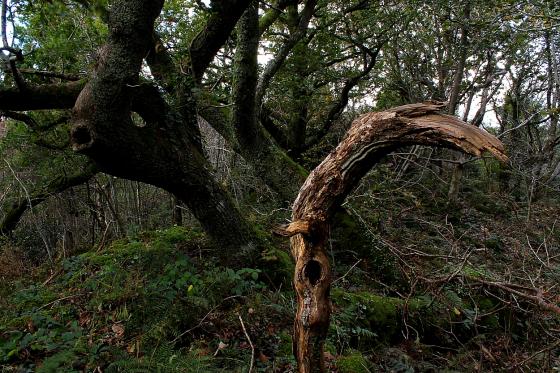About two miles and a half further on is the pass of Bwlch y Ddwyfaen, formerly distinguished by two large stone pillars fixed upright in the ground at about a hundred yards’ distance from each other. Only one of them, that to the left of the road, is now standing. It is a block of stone, about ten feet high, quadrilateral at bottom and tapering to a point at top. It has tthe appearance of having been originally a huge boulder, partially and rudely cut on the sides, and then placed upright in the ground.
The other stone, a little further on to the right of the road, has fallen down, and has evidently been partially cut by rude workmen. These stones once probably belonged to a large circle.
Near them, to the left, is a mutilated cairn of loose stones. All these stones, according to local tradition, came there in somewhat an odd manner. A giant and his wife, many centuries ago, were travelling along this route to Anglesea. At this spot, they met a rustic of whom they enquired the distance. The poor fellow shook his head, and lifting up his feet, protected only by the remnants of what were evidently once thick wooden clogs, informed his astonished hearers that these were quite new when he quitted the island, and that he had walked direct from it ever since. The giant’s wife was so discouraged by this that she gave the whole matter up as a bad job, and in her despair let fall the contents of her apron, these identical stones.
If these roads in ancient times were anything like what they now are, we can readily believe in the state of the rustic’s clogs. They are quite rough enough to wear out soles of any thickness, whether of leather or of wood. Ours were in a rare state by the time we got to the station in Aber, between five and six miles further on.
From p120/121 of ‘Notes of Family Excursions in North Wales’, by J. O. Halliwell, 1860. Online at Google Books.












































































































































































